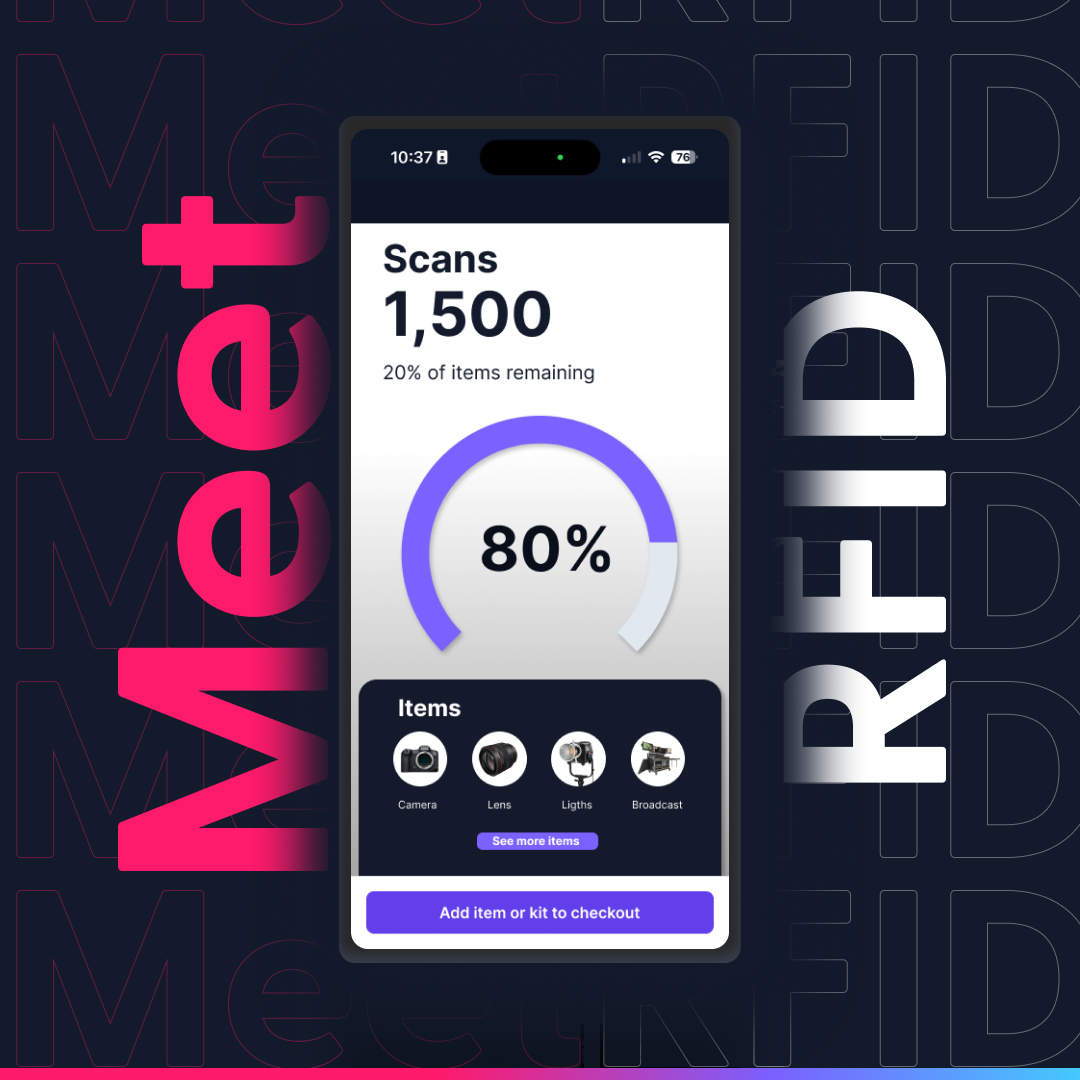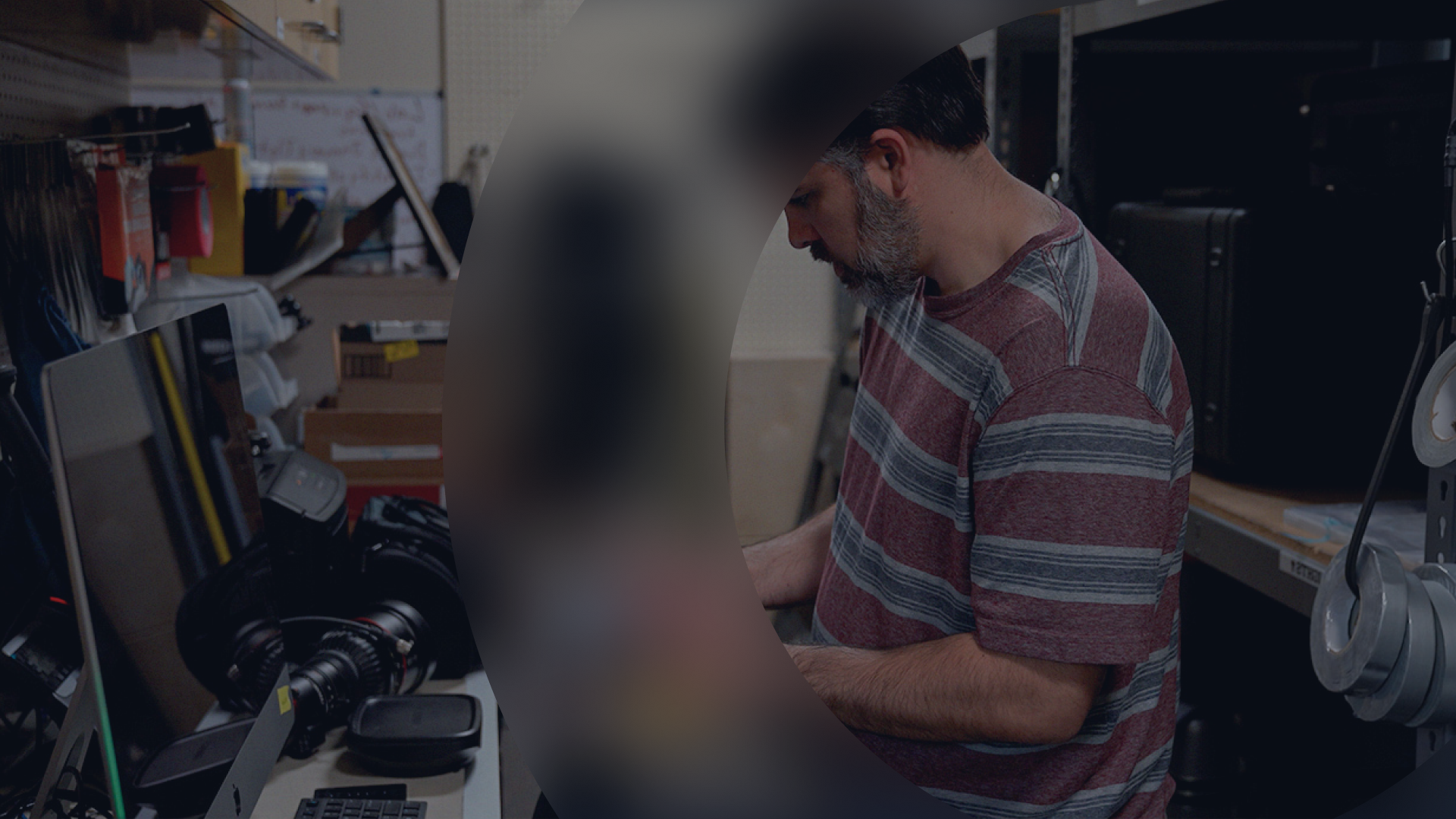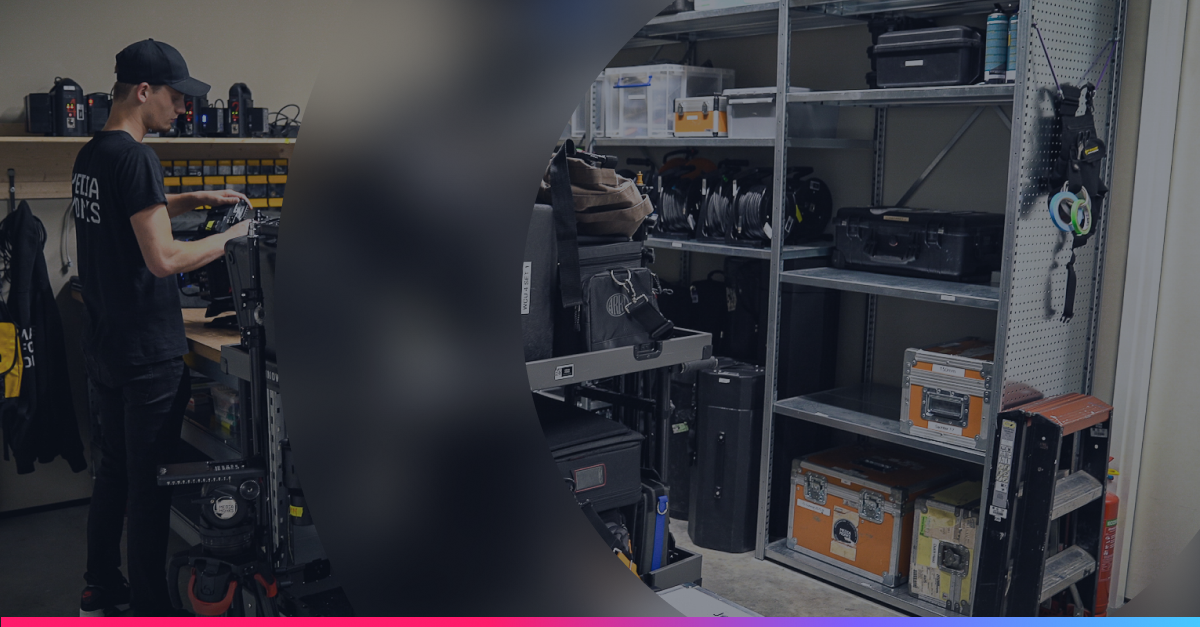Whether you're slinging a high-end cinema camera, running a crucial experiment with a specialized microscope, or just keeping the office IT running smooth, your gear is your superpower. It’s the engine that drives creativity and progress.
Gear management is basically the art of keeping track of all that awesome, expensive stuff—making sure it’s organized, maintained, and available when you need it. For any team that shares equipment, from film crews to research labs, getting your gear management right isn't just about avoiding mess; it's about saving a ton of cash, avoiding stressful delays, and letting your team do their best work without any logistical headaches.
Why Is Your Current Gear Management System Failing You?
We've all been there: relying on a messy spreadsheet, a dusty whiteboard, or just "institutional memory" (read: hoping someone remembers where the expensive lens went). This ad-hoc approach quickly turns into organized chaos, leading to major and costly problems.
What are the common problems when you don't have a good gear management system?
- The Equipment Blind Spot: You literally don't know what you have, where it is, or who's using it. This means you waste precious time hunting for items and, worse, you end up buying duplicate equipment you already own.
- The Scheduling Nightmare: You double-book a critical piece of gear—say, a main camera—for two different projects. Hello, delays and major team frustration.
- Surprise Downtime: No one schedules maintenance, so your gear breaks down at the absolute worst moment—like your main camera failing right in the middle of a big shoot.
- Zero Accountability: Gear goes missing, gets stolen, or gets damaged, and there’s no clear paper trail of who was last responsible. It makes it impossible to prevent the same thing from happening again.
The Game Plan: Best Practices for Smart Gear Management
Ready to ditch the chaos and take proactive control? These best practices apply no matter what kind of gear you manage—production equipment, lab instruments, or IT assets.
1. Centralize Your Inventory: It’s Your Single Source of Truth
What is the foundation of effective gear management?
The absolute first step is a complete, accurate, and centralized inventory. This document is your team's one source of truth.
- Go Beyond the Basics: Don't just list the name. Include the manufacturer, model, serial number, purchase date, warranty info, current condition, and location. For a lab, you might track calibration dates; for film, you'll track all the kit components.
- Ditch the Spreadsheet for Good: Spreadsheets are static and error-prone. Move to a cloud-based equipment management system so your entire team can access and update the inventory in real-time, from any device.
2. Standardize Your Organization and Labeling
How can I make my gear easy for everyone to find?
Consistency is everything. A standardized system means anyone can find what they need fast.
- Group Everything Logically: Break your gear into clear categories (e.g., "Cameras," "Audio," "Lighting"). Better yet, create standardized kits for items that are always used together.
- Label Like a Pro: Give every single item a unique identifier. Use durable QR code or barcode labels that can be scanned with a smartphone. This transforms a physical item into a digital asset, instantly linking it to all its data. Pro Tip for Film: Using simple, non-descript numbering on cases can actually enhance security by not advertising the expensive contents.
3. Implement a Formal Check-In/Check-Out Process
What's the most effective way to boost accountability for shared gear?
A formal checkout process is your best friend for tracking who has what and reinforcing accountability.
- Embrace Self-Service: Let your users reserve and check out gear themselves through an online portal or mobile app. This saves your admins time and lets users plan ahead.
- Use Digital Agreements: For expensive gear, make users sign digital loan agreements at checkout. This simple action has been shown to significantly reduce late returns and equipment loss.
- Track Condition on Return: The check-in should include a required step for users to report the gear's condition and flag issues. This lets your manager schedule repairs immediately, ensuring the next person gets a fully functional item.
4. Establish a Proactive Maintenance Schedule
How do I extend the life of my equipment and prevent failures?
Don't wait until something breaks! Proactive maintenance is crucial for reliability and extending lifespan.
- Schedule Preventive Tasks: Based on manufacturer recommendations and how often you use the gear, schedule regular tasks like cleaning, calibration, and parts replacement.
- Log Everything: Every single maintenance action—from a simple clean to a major repair—should be logged against the asset’s record. This history helps you spot recurring problems and make smarter purchasing decisions down the line.
- Keep Spares Handy: Maintain an inventory of critical spare parts. This helps avoid long, painful downtime while you wait for a shipment.
5. Leverage Your Data for Smarter Decisions
How can my gear management system help me make strategic decisions?
Your system isn't just a tracker; it's a powerful data source. Use it to move beyond daily tracking and start making strategic calls.
- Check Utilization Rates: See what gear is always in demand and what's collecting dust. This is crucial data for justifying new purchases (for popular items) or selling off underutilized gear.
- Analyze Your Costs: Track the Total Cost of Ownership for each asset, including all maintenance and repair expenses. This helps you figure out if it's finally more cost-effective to replace an item instead of repairing it again.
- Forecast Future Needs: Use historical usage data to anticipate future demand, especially for seasonal surges or big upcoming projects.
Gear Management in Action: Real-World Scenarios
- Film Crews: On a fast-paced set where time is money, a robust gear management system allows the manager to pre-schedule specific gear for every shoot day and create standardized kits for quick deployment. Using a mobile app for check-outs on set ensures the crew can move quickly without losing accountability.
- University Labs: Labs manage incredibly diverse and expensive shared equipment. A system ensures fair access for everyone with an online reservation portal. Crucially, it tracks maintenance and calibration schedules, which is essential for experimental accuracy and safety compliance. Plus, for core facilities, the system can even automate billing for equipment usage.
The Bottom Line: Stop Losing Time and Gear
Strategic gear management takes your equipment from being a logistical headache to a smoothly running operational asset. By focusing on best practices—centralizing inventory, standardizing processes, being proactive with maintenance, and leveraging your data—you’ll save significant time and money.
Most importantly, you'll be empowering your team with the reliable, accessible tools they need to innovate and excel.









